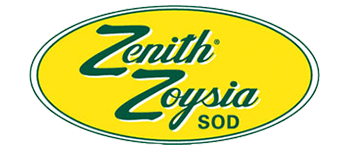

Turfgrass Spec Sheet: Zenith Zoysiagrass
- Shade & Tolerance
- Drought & Tolerance
- Traffic Wear & Tear Tolerance
- Maintenance Level
(Time + Dollars)
Description
Zenith is the result of breeding three parents that produced this outstanding variety with medium-textured, dark green leaves. It creates a dense, slow-growing, low-maintenance turfgrass that can tolerate traffic and wear better than most warm season lawns.
Uses
Zenith is commonly used in both commercial and residential landscapes, sport fields, golf courses, roadsides, and medians.
Adaptability
Zenith tolerates extreme heat and cold and is the best Zoysia for cooler climates. After the cold 2014 winter, Zenith greened up with little damage, showing its stronger cold tolerance. It’s well adapted for climates from the southern coast of the US to the upper transition zone. It will establish, survive, and provide a beautiful lawn from as far north as New York to Illinois and west to California and Oregon.
Adaptability Zones
Zones 5b to 11a on the 2012 USDA Plant Hardiness Zone Map or Zones 1-4 on the Turfgrass Hardiness Map.
Dormancy
Zenith is a warm-season grass that, after first frost, goes dormant for the winter.
Shade Tolerance
Zenith performs great from full sun to medium shade.
Drought Tolerance & Water Management
Zenith survives drought conditions by going dormant (leaves roll up and turf turns gray) then greens up at the first exposure to moisture. Zenith does not like poorly drained soils especially where water may stand for several days. Optimum water management for Zenith, as with any grass, is dependent on soil physical characteristics and climate. In general, Zenith will require 1” of water per week.
Weed Tolerance
Zoysia’s dense growth can reduce the weed population, but to be sure, use of a pre-emergent herbicide (recommended for use on zoysia lawns on the label) is recommended in the spring and fall. Read and follow label directions.
Insect Tolerance
Zenith is particularly tolerant of common lawn insect pests. Grubs and bill bugs (plus mole crickets in the Lower South) are turf insects that can cause damage. Zenith has shown to be a Canada Goose non-attractor in research published by the FAS and USDA.
Disease Resistance
In Zenith, diseases are not really a problem unless water and/or fertility has been mismanaged. Zoysia Patch disease (Rhizoctonia fungus) can be a problem in overfertilized lawns. Some rust may be expected in cool spring weather and other leaf diseases may show up in hot, humid weather, but the grass will usually recover if water and fertility levels are minimized. Zenith is the most large patch resistant zoysia available. We recommend annual spring compost topdressing with our Soil3 organic compost to minimize disease impact (more info at soil3. com) and help control thatch.
Traffic & Wear Tolerance
Zenith tolerates wear and traffic such as dog and child use as well as golf cart traffic in golf course situations. Because of its slow growing nature - recovery may be slow.
Fertility
Apply between 2 and 3 pounds of slow-release nitrogen per 1,000 square feet annually, during the growing season. Select a fertilizer that is labeled for use on zoysia lawns. Too much fertility will result in a thatchy and unhealthy lawn. Always fertilize based on a soil test. Don’t use “winterizers” in the fall. Supplemental applications of Iron will improve grass color. Compost topdressing with Soil3 and aerating in the spring, after spring green up, can supply one of Zenith’s fertilizer applications for the year. The practice of compost topdressing with Soil3 is true organic lawn care.
Soil pH
Neutral to alkaline soil with a pH range of 6 to 7. Do not apply lime without a soil test.
Mowing Height
Maintain cutting height of 3/4 to 1 1/2 inches. Mowing may be required on a 7 to 10 day interval. Mow no more than 1/3 of the leaf off at one mowing. Use sharp mower blades and catch and remove clippings. Can be mowed with rotary mowers or robotic lawn mowers.
Establishment
Zenith is the first hybrid zoysia variety that is available as sod and seed. Sod is very easy to establish all year long, even when dormant. Seed is easy to plant and germinate. Plant seed in the spring after all danger of frost is past, covering it with a thin layer of Soil3 organic compost to improve establishment. Complete sod and seed establishment instructions are on our website.



